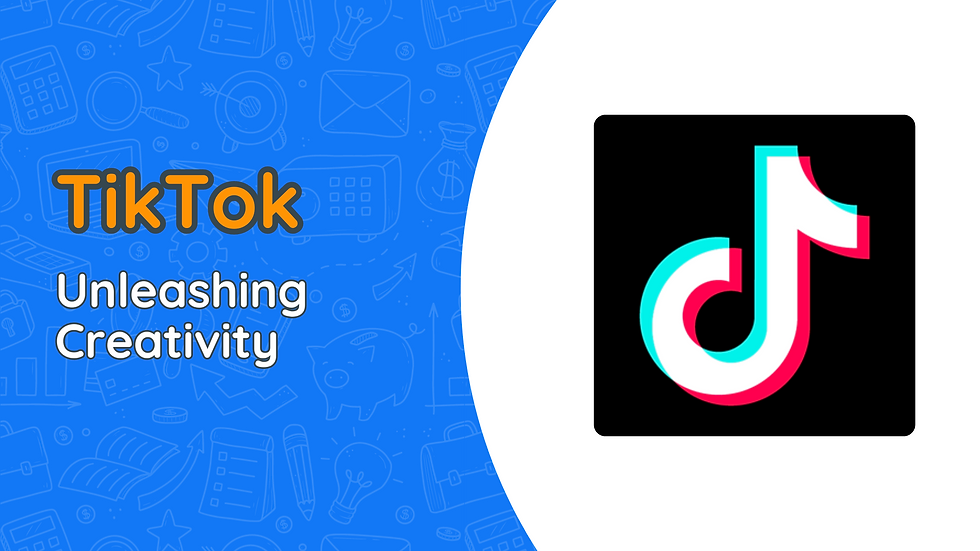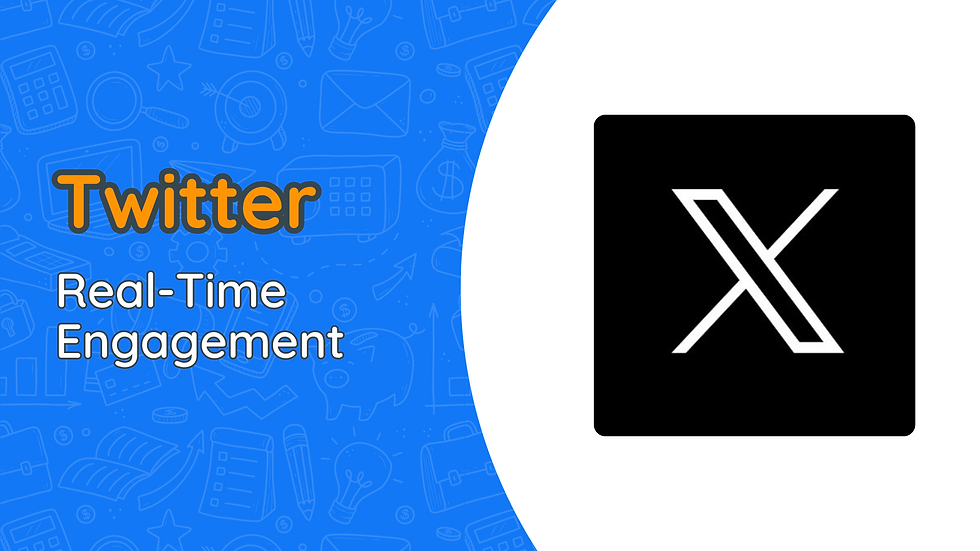Which Platform is Best to Market your Language Education Brand?
- Renee Arinze

- Nov 1, 2023
- 5 min read
Social media platforms have become integral to business marketing strategies. With range of options available, you've likely pondered which one suits your language education business best.
Popular platforms for gaining brand awareness and marketing your services include: TikTok, Instagram, Facebook, LinkedIn, and Twitter. However, there isn't a one-size-fits-all solution. The key is to choose the platform that aligns seamlessly with your brand.
In this article we will help you to choose the right platform for your marketing strategy.

But first let's consider whether or not it’s important in the grand scheme of things.
Does the Platform Matter?
The short answer is yes. Selecting the appropriate social media platform can be likened to choosing the right location for a physical storefront. It's about being where your target audience is, speaking their language, and offering content and services that resonate with them. By doing so, you create a strong online presence, enhance your brand's reputation, and ultimately, grow your language education business.
Imagine this...
You're opening a language school. You have two location options: one in a bustling, culturally diverse neighborhood frequented by students and language enthusiasts, and the other in a quiet, remote area where few people interested in language learning reside. Choosing the first location aligns with your target audience, ensuring you're accessible to the very people who are likely to enroll in your courses. This choice maximizes your visibility, attracts potential students, and fosters a vibrant learning community.
Similarly, selecting the appropriate social media platform is like choosing the bustling neighborhood over the quiet one. Each social media platform represents a different community online. By opting for a platform where your potential students actively engage, you're essentially setting up your digital storefront in the heart of a thriving online community of language learners.
But what happens if you choose the wrong platform...
Well, it's like opening your language school in that quiet, remote area with no interested audience. Despite your expertise and the quality of your courses, you might struggle to attract students. Similarly, if you invest your time and resources in a social media platform where your target audience isn't active, your content will go unnoticed, leading to a lack of engagement, brand visibility, and ultimately, business growth.
Making the wrong choice means missing out on opportunities to connect with potential students, failing to build a community around your language education services, and not leveraging the full potential of social media marketing. By making the right choice, however, you can create a thriving online presence, build a loyal student base, and establish your language education brand as a reputable authority in the industry.
How to Choose
When choosing the best social media platform for your language education business, it's essential to ask yourself a series of questions to make an informed decision. Here are some key questions to consider:
Who is my target audience?
What are my marketing goals?
What type of content can I create?
What is my budget and time constraints?
What are my competitors doing?
What are the unique features of each platform?
What are my long-term goals?
Can I track insights effectively?
How can I engage with my audience?
By thoroughly evaluating your answers to these questions, you can identify the social media platform that aligns most closely with your language education business objectives, target audience, content capabilities, budget, and long-term goals.
Making an informed decision based on these factors will significantly enhance your online presence and contribute to the growth of your language education services.
Now let’s delve into the platforms!

1. TikTok
TikTok, the viral video-sharing app, has become a global sensation, captivating users with its short-form videos and innovative challenges. Primarily appealing to a younger demographic, specifically those aged between 16 to 24, TikTok serves as a vibrant hub for creativity, humor, and self-expression.
On this platform, users can explore a wide array of content, including engaging videos, educational snippets, language learning challenges, and interactive posts. To make the most of TikTok's dynamic environment, it's essential to embrace current trends, craft visually appealing content, utilize popular hashtags strategically, and actively engage with the audience through comments and creative duets.
By leveraging these best practices, language education providers can tap into TikTok's unique atmosphere, effectively reaching and connecting with their target audience, fostering engagement, and promoting language learning in exciting and innovative ways.

2. Instagram
Instagram, renowned for its visual storytelling, serves as a hub for sharing compelling images and videos. Its diverse user base spans various age groups, all drawn to the platform's emphasis on visuals and aesthetics.
Users can indulge in a variety of content formats, including high-quality photos, infographics, Reels, engaging Stories, and interactive elements such as polls and quizzes.
To make the most of Instagram's potential, businesses are encouraged to uphold a consistent aesthetic, use relevant hashtags to enhance discoverability, offer glimpses into behind-the-scenes activities, collaborate with influencers to expand their reach, and actively engage with followers through comments and direct messages, fostering a sense of community and building meaningful relationships with their audience.

3. Facebook
Facebook, as a social networking giant, provides a multitude of features tailored for connecting with prospective language students. Its vast user base spans across various demographics, encompassing students, professionals, and older adults, making it an ideal platform for fostering vibrant communities.
On Facebook, businesses can share a diverse range of content, including posts, videos, events, groups, and live sessions, facilitating interactive engagement.
To maximize the platform's potential, language education providers should establish a dedicated business page, share informative and engaging content, host live Q&A sessions to address queries directly, actively participate in language learning groups to expand their network, and employ targeted ads to reach specific audience segments effectively.
By implementing these best practices, language education providers can leverage Facebook's features to build robust and supportive communities, enhancing their online presence and attracting a wider audience of language enthusiasts.

4. LinkedIn
LinkedIn stands out as the ultimate hub for professional networking, designed specifically for business-to-business interactions and fostering professional development. Its user base comprises a diverse range of individuals, including professionals, businesses, educators, and students actively exploring career opportunities. This diversity creates an ideal environment for forging partnerships and expanding one's network.
On LinkedIn, the content landscape is rich and varied, encompassing thought leadership articles, educational posts, job listings, and active engagement in industry-related discussions.
To make the most of this platform, businesses in the language education sector should focus on optimizing their LinkedIn profiles, sharing valuable industry insights, connecting with fellow professionals within the education sphere, actively participating in relevant LinkedIn groups, and showcasing their language courses and success stories.
By adhering to these best practices, language education providers can effectively leverage LinkedIn's professional environment to enhance their online presence, connect with potential students, and establish themselves as authorities in the field.

5. Twitter
Twitter also known as X, is a dynamic space that revolves around real-time updates, trends, and brief messaging. Its diverse user base comprises students, professionals, and influencers who appreciate swift and compelling content.
On Twitter, users engage through tweets, threads, polls, GIFs, and active participation in trending topics and hashtags.
To maximize the platform's potential, it is essential to tweet consistently, join trending conversations, incorporate multimedia content like images and videos, conduct polls and surveys to interact with the audience effectively, and promptly respond to mentions and messages.
By implementing these tips, language education providers can benefit from Twitter's real-time engagement features enabling them to connect with their audience, share valuable language learning insights, and foster meaningful interactions, thereby enhancing their online presence and growing their businesses.
Final Thoughts
In conclusion, the right social media platform can significantly elevate your language education business. Understanding your target audience, tailoring your content, and leveraging the unique features of each platform are key to a successful social media marketing strategy.




Comments